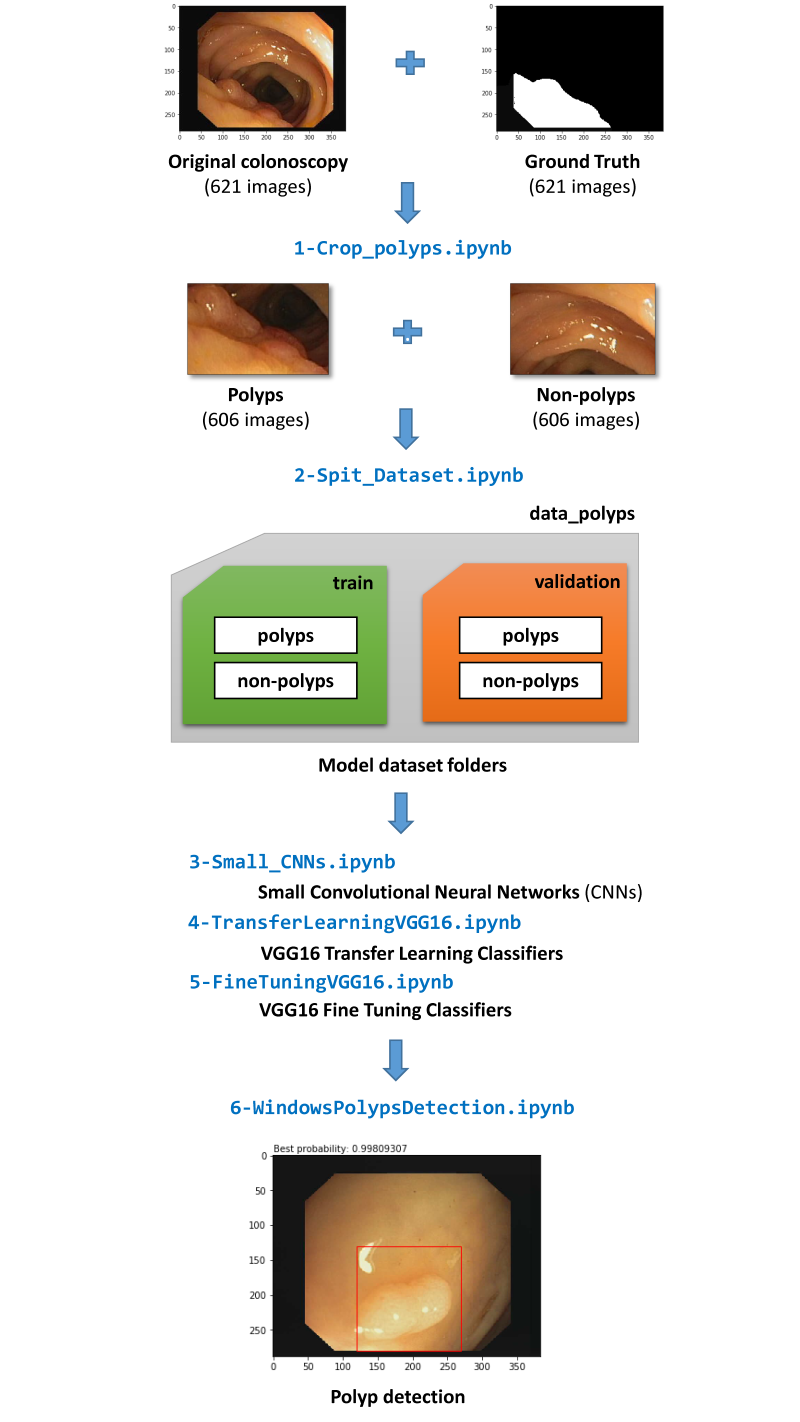CNN4Polyps - Colonoscopy polyps detection with CNN
Update 2021: Free android mobile version by XLandC & RNASA-IMEDIR, CITIC, INIBIC, REGICC:
- Polyp detector app: https://play.google.com/store/apps/details?id=com.xlandc.polypdetect
- tensorflow lite model
- flutter & dart framework
- data stays on your phone, the predictions are made by your device, no data tracking about your prediction/images
Description
This is a proof of concept repository for detection of polyps in colonoscopy images. Additional works should be done to obtain a better version of the image classifier and to create a Web/mobile app for this task. The original dataset used for this study was downloaded from:
- http://site.uit.no/deephealthresearch/2017/07/19/polyp-detection-using-deep-learning/
- https://www.dropbox.com/s/p5qe9eotetjnbmq/CVC-ClinicDB.rar?dl=0
The following steps will be implemented into separated jupyter notebooks:
- 1-Crop_polyps.ipynb: Crop the original images to extract smaller images with the polyps and non-polyps images; in addition, I eliminated the black margins to limit the future interference with the classifier.
- 2-Spit_Dataset.ipynb: Create the new dataset by splitting the new images into a folder structures such as train/validation; each new folder will contain 2 subfolders for polyps and non-polyps.
- 3-Small_CNNs.ipynb: Build first classifiers for polyps/non-polyps images using small CNNs (Convolutional Neural Networks); with only 2-3 convolutional layers is possible to obtain a validation accuracy over 90% (training of the entire CNN).
- 4-TransferLearningVGG16.ipynb: In the next step, I tried to apply transfer learning using pre-trained VGG16 networks (training only the last full connected layer). Similar results are obtained without searching a lot of hyperparameters.
- 5-FineTuningVGG16.ipynb: The last step is trying to apply fine tuning of pre-trained VGG16 networks (training 1-2 Conv blocks + FC layer). I will show you that in only 2 minutes you can build a classifier with over 98% accuracy!
- 6-WindowsPolypsDetection.ipynb: With a very simple script, it is possible to detect a polyp into a colonoscopy image (this is not the YOLO algorithm!).
Folders
- download: original downloaded dataset
- cropped: new images with polyps and non-polyps images
- data_polyps: the final dataset for the classifiers (train/validation subsets)
- saved_models: models saved with the notebooks (the large models are not saved!)
- results: extra results from these calculations
- nets: the downloaded VGG16 weights
Acknowledgements
I gratefully acknowledge the support of NVIDIA Corporation with the donation of the Titan Xp GPU used for this research (https://developer.nvidia.com/academic_gpu_seeding). The entire project was done at RNASA-IMEDIR group, Computer Science Faculty, University of A Coruna, Spain.
